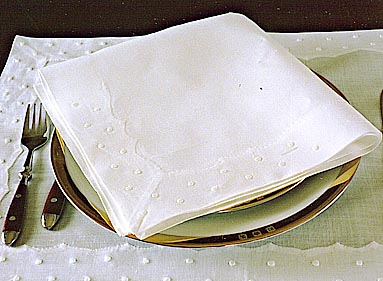
Because the kinds of meetings discussed in this chapter are often occasions for handing around business cards, this is a good place to discuss them. Your business card is an important and personal part of your communications within the corporate culture, and you should know how and when to use it.
Business cards have three main uses:
- They provide vital information about you—your name, your company, your title, and how you can be reached.
- They can be clipped to a document, a photograph, a magazine, or anything you’re sending to someone who might find the information useful, letting the recipient know that you’re the sender and providing your contact information.
- They can be used as enclosures in gifts or with flowers.
How and when to present your card:
- Present your card with the type side up. When someone hands you a card, look at the person to connect card with face.
- Don’t appear anxious to thrust your card on a senior executive. Wait until asked.
- Be selective. If you are with a large group of people, don’t give your card to everyone. Doing so is pushy and creates the impression that you’re trying to sell something.
- Some people give their business card to anyone they meet. Not a good idea. On the one hand, it’s irritating. On the other, you may regret supplying a stranger with your name and business address.
- Be unobtrusive about giving someone your card at a social function. Think of this action as a private exchange between two individuals.
- If your cards are soiled, damaged, or out-of-date, get new cards. It’s better to give no card than to give one that looks bad.
- You never know when someone is going to ask for your business card, so carry a few with you at social as well as business functions. If you don’t have a card, apologize and write out the information on a piece of paper.
- Whether you are dining at Joe’s Chili Joint or at a black-tie dinner, business cards should not surface during a meal. If asked, pass one as discreetly as possible. In fact, if the event has been billed as a social rather than business-related affair, you should be discreet about talking business at all. All business meetings—regardless of location (boardroom or dining room) and participants (your colleagues, your boss, or your employees)—require preparation, a healthy helping of respect for all present, and a knowledge of the basics of meeting etiquette.

 Escort your guests to the door. Shake hands and thank them for coming. Remind them about the next meeting, or if one has not yet been scheduled, say you will call them within a week. (And make sure that you do call within that time frame.) The guest should thank the host, praise the restaurant, and within two days, send a handwritten note. If your penmanship truly resembles Chinese algebra, you may type the note, but a handwritten note is infinitely more desirable. Under no circumstance should you fax or e-mail your thanks.
Escort your guests to the door. Shake hands and thank them for coming. Remind them about the next meeting, or if one has not yet been scheduled, say you will call them within a week. (And make sure that you do call within that time frame.) The guest should thank the host, praise the restaurant, and within two days, send a handwritten note. If your penmanship truly resembles Chinese algebra, you may type the note, but a handwritten note is infinitely more desirable. Under no circumstance should you fax or e-mail your thanks.






